All issues

Volume 15, Issue 3
Displaying 1-5 of 5 articles from this issue
- |<
- <
- 1
- >
- >|
-
CHOKUDO SUJAKU, TAMAKA OO, AKIO TOKOSHIMA, TAKASHI KOGA, TADASHI MATSU ...1968 Volume 15 Issue 3 Pages 127-136
Published: November 20, 1968
Released on J-STAGE: August 11, 2009
JOURNAL FREE ACCESSAmong odontogenic tumors the ameloblastoma is known as a tumor deriving from the ectoderm, and since it has a variety of forms patho-histologically, it is classified into several types according to its histological pictures. At the level of the electron microscope, however, there are relatively few reports about tumors of this kind. To our knowledge, ameloblastoma have been described only by Kitamura (1958), Moe et al. (1961), Matsuda (1967), and Takaki (1967). Recentry, we had an opportunity to observe, under the electron microscope, part of the tissues, of a tumor developed in the mandible which had been diagnosed clinically as well as histologically as an ameloblastoma, so that the results obtained will be here reported.View full abstractDownload PDF (13617K) -
HIROSHI MUKASA, KATSUYOSHI ARIKAWA1968 Volume 15 Issue 3 Pages 137-143
Published: November 20, 1968
Released on J-STAGE: August 11, 2009
JOURNAL FREE ACCESSThree hundred and thirty alcoholic patients were treated over a 6 year period with the drug Cyanamide using a new method of administering the drug called the double medication technique in which the family administers the drug without the patient's knowledge. One hundred and eighty patients still continued to take the medication and are considered cured by their families and are now able to function well. Psychotherapy involving the families was an useful adjunct to the drug therapy. The prognosis for cure is better if the patient can be treated while he is still living with his family and working at his job. The efficacy of using Cyanamide in the treatment of alcoholism using the double medication technique is proven with this study.View full abstractDownload PDF (501K) -
KAZUTOYO INANAGA, IKUO YAMAUCHI, YOICHI YAMAMOTO, KIICHI ISHIKAWA1968 Volume 15 Issue 3 Pages 145-151
Published: November 20, 1968
Released on J-STAGE: August 11, 2009
JOURNAL FREE ACCESSEEG findings in schizophrenia have been discussed by a number of workers. Various types of abnormalities have been described, including major paroxysmal discharges in a small proportion of cases. The authors have investigated the significance of photic activation procedure, the correlation between EEG and psychopharmacological treatment and the longitudinal study of each case in schizophrenic patients. From these studies, attention was focused on the correlation between photically activated theta waves and hallucination. Then we are interested in the correlation between activated theta waves and the existence, frequency, intensity (or content) of hallucination and patient's attitude to it. For this purpose, a number of patients with hallucination are needed as the subjects. This paper attempts to provide some data on these problems obtained in schizophrenic patients with hallucination.View full abstractDownload PDF (547K) -
KIICHI ISHIKAWA1968 Volume 15 Issue 3 Pages 153-167
Published: November 20, 1968
Released on J-STAGE: August 11, 2009
JOURNAL FREE ACCESSThis study was conducted to compare the VER characteristics of schizophrenics (41 pre-drung and 47 on-drug patients) with those of 38 normal controls by using a recovery function technique, and to detect possible correlations between the recovery curve and some clinical symptoms of schizophrenics. The results were as follows: 1) There were no significant differences between the amplitude and age or sex, and between the amplitude and clinical types or presumptive onsets of schizophrenics. 2) The mean amplitudes of R1 and R2 were consistently lower in the predrug group and higher in the on-drug group than in the normal group. As to the distribution of the greatest amplitude, the pre-drug group also showed significantly higher percentage of cases with lower amplitude below 10 μV as compared to the remaining groups. 3) The mean recovery curves indicated a nearly identical pattern in all groups. But somewhat meaningful difference between controls and schizophrenics was found at 140 and 160 msec intervals. The latter presented higher value than the former. 4) In regard to the distribution of the greatest value of R2 : R1 ratio in each subject, the higher ratios above 2.0 were found in the schizophrenics more than in the controls. But the on-drug group showed significantly higher percentage of cases with the ratios above 4.0 in comparison to the pre-drug group. 5) The most important results in this study were the findings that 80 percent of the patients with the maximal supernormal peak at the 140 msec interval, had manifested hallucination, and on the contrary, 50 percent of the patients with hallucination showed the maximal supernormal peak at the 140 msec interval, whereas the majority of non-hallucinatory groups presented the peak at the interval of 100 msec. These findings were highly suggestive of the correlation between the increased responsiveness of the R2 at the 140 msec interval and the presence of hallucination. And relationship of these findings with the facilitation of the fundamental driving responses of EEG to 7 c/s flickering light was briefly discussed.View full abstractDownload PDF (3275K) -
AKIO HORI, TATSUO AKIMOTO1968 Volume 15 Issue 3 Pages 169-178
Published: November 20, 1968
Released on J-STAGE: August 11, 2009
JOURNAL FREE ACCESSDownload PDF (2661K)
- |<
- <
- 1
- >
- >|